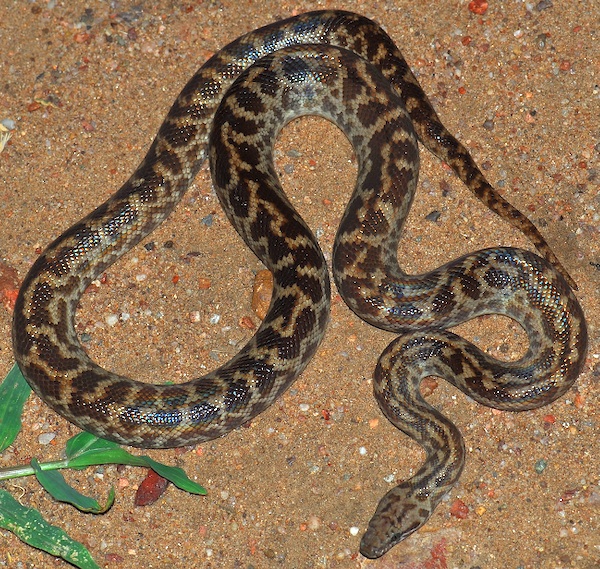- Antaresia maculosa
Taxobox
name = "Antaresia maculosa"

image_caption =
regnum =Animalia
phylum =Chordata
subphylum =Vertebrata
classis =Reptilia
ordo =Squamata
subordo =Serpentes
familia =Pythonidae
genus = "Antaresia "
species = "A. maculosa"
binomial = "Antaresia maculosa"
binomial_authority = (Peters,1873 )
synonyms = * "Liasis maculosus" - Peters, 1873
* "Antaresia maculosus" - Wells & Wellington, 1984
* "A" ["ntaresia"] . "maculosa" - Kluge, 1993McDiarmid RW, Campbell JA, Touré T. 1999. Snake Species of the World: A Taxonomic and Geographic Reference, vol. 1. Herpetologists' League. 511 pp. ISBN 1-893777-00-6 (series). ISBN 1-893777-01-4 (volume).]:"Common names: spotted python.""Antaresia maculosa" is a non-venomous python
species found in northernAustralia . A popular pet among Australian reptile enthusiasts due to its small size and even temperament. Nosubspecies are currently recognized.ITIS|ID=634765|taxon="Antaresia maculosa"|year=2007|date=18 September]Description
Adults average about 4 feet in length. It has an irregular, blotched color pattern throughout its life. The blotches have ragged edges because the dark pigmentation occurs only on complete scales.
Geographic range
Found in
Australia from the extreme north of theCape York Peninsula , south through easternQueensland to northernNew South Wales . Also on many islands off the coast of Queensland. The type locality given is "Rockhampton, Port Mackay, Port Bowen [= Port Clinton] " [Queensland, Australia] . L.A. Smith (1985) restricted the type locality to "Port Mackay" (Mackay, Queensland, in 21° 09'S, 149° 11'E) bylectotype designation.Habitat
Found in most types of habitats, but prefers rocky hillsides and outcrops with crevices and caves.
Feeding
One of its favorite foods are the insectivorous
bats that it catches at the entrance of their caves. Being the largest members of this genus, captive specimens will usually accept mice and small rodents.Reproduction
Oviparous , with females laying up to 15 eggs at a time.Taxonomy
Wikimedia Foundation. 2010.
